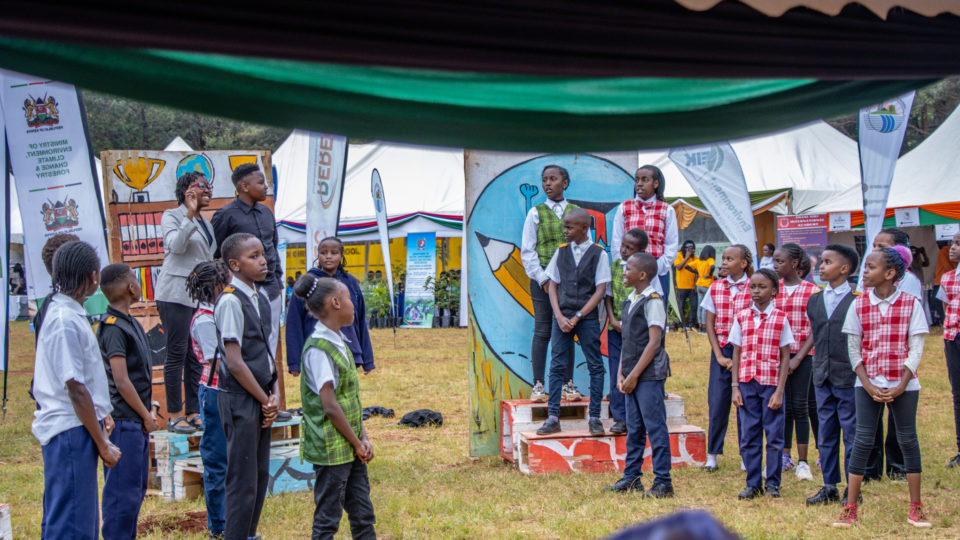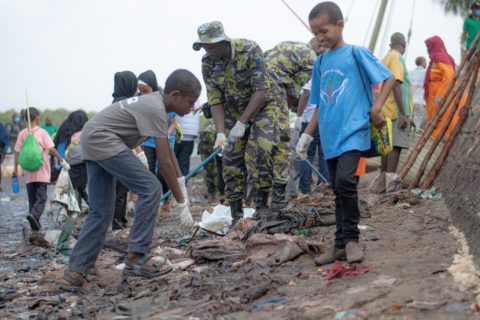On the morning of February 2nd, as the sun rose over wetlands across the country, nature came to life in all its beauty. Birds perched in the trees, crabs scuttled across the shores in search of their morning meal, fish swam through the cool waters, and fishermen ventured out to find their daily catch. All of this was made possible by wetlands, the often unseen yet indispensable guardians of nature.
But on this particular day, the world paused to acknowledge their importance. It was World Wetlands Day, a moment to reflect, take action, and commit to ensuring these ecosystems thrive. This year’s theme, “Protecting Wetlands for Our Common Future,” served as a powerful reminder that our actions today will determine the fate of these ecosystems and the well-being of future generations.
A National Commitment to Wetland Conservation
In Kikuyu, at Alliance High School near the Ondiri Wetland, where the national celebrations took place, the government reaffirmed its dedication to wetland protection and restoration. Climate Change PS Eng Festus Ng’eno, speaking on behalf of the Cabinet Secretary for Environment, Climate Change, and Forestry, highlighted the vital role wetlands play in water provision, tourism, and biodiversity conservation. He explained how wetlands act as natural water filters, trapping pollutants and sediments to maintain water quality while also serving as habitats for rare and endangered species.
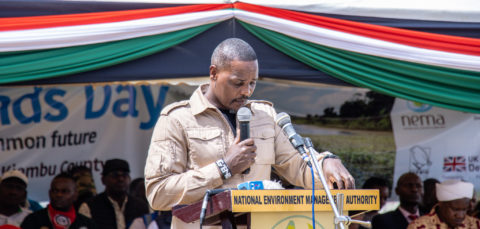
PS Festus Ng’eno giving his remarks during the national celebrations for World Wetlands Day 2025
PS Eng Festus Ng’eno stressed the urgency of wetland conservation, warning that neglecting these ecosystems would accelerate pollution, worsen climate change, and cause irreversible biodiversity loss. He further urged communities to adopt wetlands near them and become champions for their conservation, ensuring long-term protection through grassroots involvement.
Recognising the need for stronger legal frameworks, he announced the government’s plan to fast-track the gazettement of wetlands as Ramsar sites of international importance. This move is set to enhance conservation efforts, providing critical ecosystems with formal protection and sustainable management.
Restoration Efforts: Turkana and Lamu Lead the Way
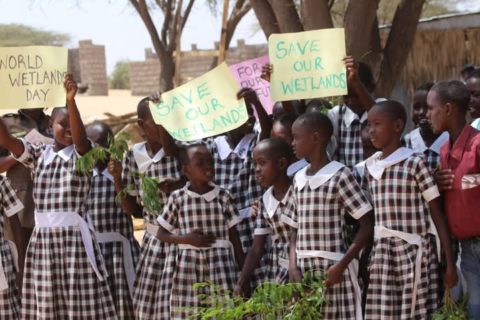
Beyond Kikuyu, the message of conservation was echoed in other regions. In Turkana County, communities marked the day with restoration initiatives, planting bamboo trees along riverbanks to prevent erosion and mitigate flooding. This approach, which has seen success in other counties, is a sustainable solution to protecting wetland-adjacent areas. Additionally, indigenous trees were planted to reinforce long-term wetland rehabilitation.
In Lamu County, local communities took an active role in wetland conservation through coastal clean-ups and awareness campaigns. Given Lamu’s rich coastal and mangrove ecosystems, these efforts were particularly significant. Mangroves, like other wetlands, are critical for climate regulation, acting as carbon sinks while also protecting coastlines from erosion. The engagement of young people in these activities showcased a promising future for wetland conservation in Kenya.
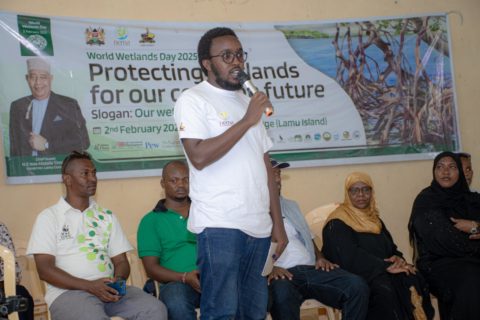
A Call Beyond Celebration: The Work Ahead
This year’s theme, “Protecting Wetlands for Our Common Future,” is more than a slogan, it is a responsibility that extends beyond a single day of celebrations. Wetlands are to the planet what kidneys are to the human body. Without them, we risk ecosystem failure. Their protection must be an ongoing effort woven into policies, conservation strategies, and community actions.
As the sun set on World Wetlands Day 2025, the message was clear: the fight for our wetlands does not end here. The commitment made in Kikuyu, the restoration efforts in Turkana, and the conservation actions in Lamu must continue every day. Our future depends on it.

